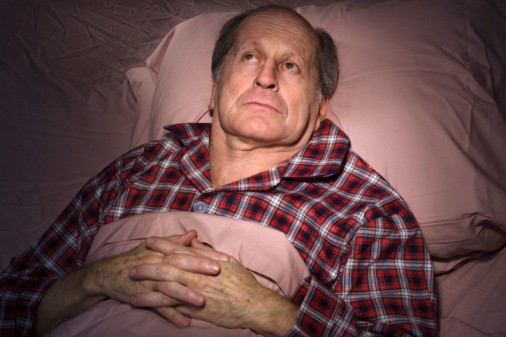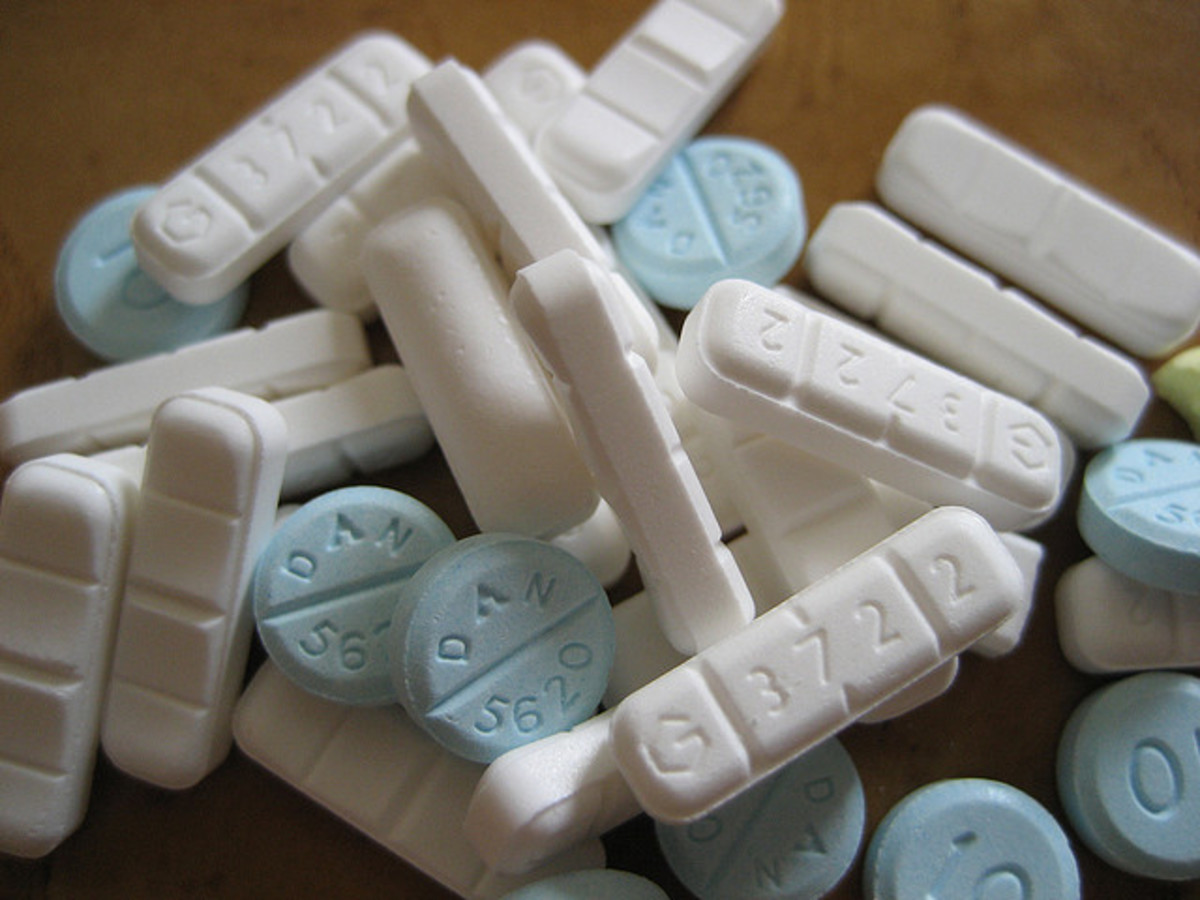Evaluating Insomnia in Older People

Most people suffer from insomnia at some point in their lifetime. The disorder involves either trouble falling asleep and staying asleep or not feeling rested after a normal amount of sleep which results in feeling tired throughout the day which causes the person distress and leads to problems in some area of normal functioning. Insomnia increases as people get older. Among older adults, trouble staying asleep is a common complaint with prevalence rates as high as 70 percent being reported. This is believed to be an underestimate as many older individuals believe that poor sleep quality is a characteristic of aging. Also, the likelihood that others in their social networks also report problems with sleep, tends to normalize the problem such that they don’t feel it’s necessary to report to their doctors.
As most older adults are less able to maintain sleep than younger individuals, seniors suffer disproportionately from chronic sleep deprivation. Sleep deprivation may result in chronic daytime fatigue, decreased reaction times, and nodding off during daytime activities. Late afternoon naps, a common strategy among those with sleep problems, further reduce a person’s ability to sleep through the night. Napping, thus, will often worsen insomnia though it may seem to help in the short term.
Older individuals also frequently shift their sleep cycle to earlier hours. Yet this may put sleep at times when their circadian clock does not indicate sleep should occur. Learning how a person's internal clock and sleep drive interact, and how these processes put limitations on when restful sleep can occur, can help people determine helpful strategies to ensure that they are able to maintain quality sleep as they age.
Evaluating Sleep Problems in Older Adults
Insomnia is the most commonly reported sleep disorder in those over the age of 65. It is also the only sleep disorder in the elderly for which several psychological and behavioral interventions have been developed and empirically tested (Smith, Perlis, Park, Smith, Pennington, Giles & Buysse, 2014). However, there are numerous possible causes of insomnia in older adults and differences have been found between subjective (i.e. self-reports and objective (i.e. reports, observation, and assessments conducted by others) measures of symptoms and experiences. Therefore, a complete evaluation is needed to determine what components to include in treatment so it meets the individual needs of each patient. When considering insomnia symptoms in older adults, differentiating age-appropriate changes in sleep from clinically significant insomnia can provide important treatment implications.
It is important to keep in mind when conducting this evaluation that while self-report measures may provide useful anecdotal information, they are weaker predictors of treatment outcomes compared to objective measures (Kay, Buysse, Germain, Hall & Monk, 2015). At the same time including the individual’s view of what is going on and why they believe this to be the case will provide important insight as the person is the most knowledgeable about their own health and the best source of information about what causes them distress. As opposed to evaluating the number of hours a patient sleeps each night it is more important to assess their satisfaction with their sleep.
It is important to point out that while a formal diagnosis can be important for determining treatment implications and sometimes to obtain insurance coverage, a senior may be suffering from sleep related problems even though they don't meet the criteria for insomnia. This speaks to the difference between what is statistically relevant and what is clinically relevant. Even if symptoms don't meet the criteria for a disorder this doesn't mean that treatment won't make a practical and significant difference in someone's life.

Using the Diagnostic and Statistical Manual (DSM) to Evaluate Geriatric Sleep Disorders
According to the DSM 5, the clinical characteristics of insomnia include dissatisfaction with sleep quality or quantity, involving trouble falling asleep, maintaining sleep or early morning awakenings. These difficulties must occur at least three times a week for three months. The sleep problems lead to significant personal distress and disrupt functioning in social, occupational, educational or behavioral role.
Important diagnostic considerations for insomnia in an elderly population include sleep difficulty persisting despite having ample time and opportunity for sleep, the insomnia does not occur exclusively during another sleep – wake disorder, the disorder is not exclusively attributable to the use of a substance, and the disorder is not better explained by do-existing mental or medical disorders (American Psychiatric Association, 2013, pg.362).
The reasons these criteria are important in the elderly for assessment purposes are evident. Many elderly are in nursing homes, residential facilities or other supervised living arrangements. These types of facilities often have little activity for the residents in the evenings leaving ample time for sleep. This makes insomnia particularly distressing for these individuals as they have little in the evenings to occupy their minds such that often they ruminate on their inability to sleep and how it will affect them.
Several other sleep disorders are known to increase in prevalence with age. These include sleep apnea, restless leg syndrome, periodic limb movement disorder, circadian rhythm sleep disorders and REM-behavior disorder (Krystal, Edinger, & Wohlgemuth, 2013). While these are different disorders, the overlap in symptoms with insomnia makes careful differentiation crucial.
Differentiating a sleep disorder from other co-morbid medical or mental problems in the elderly can be involved due to the number of medical and mental conditions seen in the elderly. The most important point related to differentiation of disorders during the assessment process is that the criteria do not state that the disorder must occur in the absence of these other factors. It only states that these factors cannot better explain the symptoms.
In a younger population this may not have as much impact on the assessment and treatment process for insomnia as it does in older populations. In seniors, there will likely be co-morbid medical and mental disorders, medication and other treatment regimens, and co-morbid sleep disorders which occur with but do not explain the insomnia. The DSM provides a systematic method of deferentially diagnosing disorders with a great deal of overlap as well as differentiating mental disorders from physiological disorders.
While the DSM basis criteria for disorders on statistical significance which determines the most common symptoms from which people with certain disorders, suffer, distress is a subjective experience. Someone who has always slept 9-10 hours a night who begins to only get 6 or 7 hours a night may find this leaves them feeling tired. Someone else who usually doesn't sleep more than 4 -5 hours a night who starts sleeping 6-7 hours a night may report feeling great.
Determining that the "normal" amount of sleep for adults to be eight hours, for example, does not take into account how sleep is experienced by different individuals, nor does it take into account how much sleep a person usually get a night. Therefore, it is crucial to take into account what the individual is subjectively experiencing in terms of sleep as opposed to just assessing the person based on statistically established criteria.
Substance Use and Insomnia in Older Populations
Substances are another factor to consider when attempting to understand insomnia in older individuals. Older populations are often taking multiple medications many of which can disrupt the sleep cycle. Determining if the disorder is related to medication when it is often not possible to stop the medication in order to determine if sleep improves, can be difficult.
Even when the patient only takes what is prescribed in the doses instructed, many medication can interact even at small amounts, to inhibit or alter the sleep process. Making sure the doctor frequently checks the medications an older individual takes especially when altering the medications or prescribing new ones for all interactions is crucial. When insomnia exists and this is a known side effect of certain medications the individual is taking, the doctor should consider other medications that can treat the same condition but do not have sleep problems as a potential side effect.
Additionally, while most people believe that substance abuse almost never occurs in older individuals this is not the case. Although the rates of substance use disorder are generally lower among older adults, aging itself alters the body in such a way that older people are often more susceptible to substances than their younger counterparts. Physicians may not catch abuse of prescription medication in older individuals because the amount needed to produce the desired effects is often relatively small. Similarly when tolerance develops the amount needed to re-establish the desired effects are seemingly small. This means that the amount prescribed and the frequency and amount increased may seem reasonable.
Illicit drugs may also be abused by older individuals. In this case it is unlikely that the individual will disclose this to their physician. Thus, sometimes the contribution of medication and drugs or alcohol to insomnia may be overlooked. Risk factors can differ considerably based on the substance in question and the specific clinical presentation of a patient (e.g. age, medical comorbidities, current medications, and health history). Understanding substance-specific risks of sleep problems can help practitioners recognize and respond to medication issues which may be contributing to insomnia.

Issues Related to Assessment
Many older individuals assume that insomnia is something that naturally occurs with aging. Therefore they may not mention it during medical office visits. Since insomnia can be a symptom that helps with the diagnosis of numerous conditions health care providers should assess sleep routines and habits along with any problems in that area every visit. it is important that a comprehensive assessment that supplements a standard medical exam be conducted that determines the individual’s level of adjustment, and identifies any behavioral abnormalities including sleep problems.
As many patients are reticent to discuss sleep and sleep habits, providers should make a practice of initiating the conversation and assessment process during regular visits. The assessment should include a comprehensive history, physical exam, complete review of acute and chronic medical conditions, review of medications, assessment of mood and other psychological conditions, social outlets and support. Patients should be aided in learning to keep a sleep log/diary as this can provide information that may not be remembered if not recorded after it happens..
While structured and semi-structured interviews are useful in ensuring all areas are covered it is important that practitioners learn how to interview patients based on what they present with appropriate probes and follow-up questions. This means listening to what the patient says as well as what they don’t say and clarifying the former while eliciting information when confronted with the later. Close attention must be paid to concomitant conditions and environmental circumstances to determine if these factors co-occur with the insomnia or if they account for the insomnia. Differentiating between different disorders, medical conditions, medications, other sleep disorders, and psychosocial functioning will help the practitioner determine whether insomnia is a primary conditions of a secondary condition (Krishnan, & Hawranik, 2008).
Subjective vs. Objective Reports
When determining the degree to which sleep is disturbed in older individuals, self-reports of sleep duration are often used. Since actual sleep time and perceived sleep time may differ based on a host of factors, studies have been conducted to determine the discrepancy between subjective and objective assessments of sleep. In one such study, Van Der Berg, et al. (2008), examined the similarity between actigraphy readings using a watch-like device and journal records of sleep. Results indicated discrepancies of more than an hour for those who slept 5 hours or less per night, where the subjects over-estimated sleep duration. In other words they believed they had slept longer than they truly had.
Results also showed that poorer sleep quality, decreased sleep duration and a lower sleep efficiency were associated with greater discrepancies, as were an earlier bedtime, later get up time, and compromised cognitive function. However, these relationships were negative indicating that these factors were associated with the belief that the subjects had slept significantly less than they really had and that their sleep quality and efficiency were worse than that indicated by the actigraph.
These finding are important for assessment of elderly sleep problems for several reasons. When people believe they obtained a good night’s sleep but they are tired, have difficulty thinking and attending and just feel poor overall, they become irritable, frustrated, angry and often may believe that something is wrong with them leading to problems with mood. They also don’t think to report it since their perception is that they get plenty of sleep.
Those who have an earlier bedtime and who stay in bed later may be laying in bed without sleeping thinking about anxiety provoking subjects leading to decreased ability to sleep. Cognitive impairment can lead to misperceptions in amount of sleep and low frustration tolerance. Due to these factors tying into mood symptoms, subjects would likely estimate their sleep as being even poorer than it is. These findings are important for assessment since they point out the need for multiple types of evaluation and reports to ascertain actual sleep problems and perceived sleep problems. Even though perceptions of sleep problems may not be accurate they can be important indicators of mood and other conditions which can be contributing to sleep difficulties in older individuals.

Concluding Remarks
In conclusion, when assessing elderly patients for insomnia it is important to pay attention and fully evaluate a number of different areas. These include the effects of medication, other sleep disorders, mood and physical conditions, social functioning and support. A complete assessment can aid in the ability to differentiate between causal factors and co-occurring conditions in need of simultaneous treatment. Structured and semi-structured interviews can help incorporate all the areas that are necessary to assess.
However, it is also critical for practitioners to develop a sense for asking questions that are not included in the questionnaires but which are relevant to the individual’s patients experiences. Knowing how to formulate appropriate follow-up questions helps in not only establishing whether a sleep problem is there, but also if it is primary or secondary to another disorder.. This ability comes from extensive knowledge of the sleep process and physical structures that can contribute to or inhibit sleep. At the same time there needs to be recognition that subjective reports may be over or under- estimates of actual sleep. The manner in which the patient’s perceptions may be contributing to physical and emotional well-being can help determine the best ways to improve their quality of life.
References
Abraham, O., Pu, J., Schleiden, L. J., & Albert, S. M. (2017). Factors contributing to poor satisfaction with sleep and healthcare seeking behavior in older adults. Sleep Health: Journal of the National Sleep Foundation, 3(1), 43-48.
Kay, D. B., Buysse, D. J., Germain, A., Hall, M., & Monk, T. H. (2015). Subjective–objective sleep discrepancy among older adults: associations with insomnia diagnosis and insomnia treatment. Journal of sleep research, 24(1), 32-39.
Li, M. J., Kechter, A., Olmstead, R. E., Irwin, M. R., & Black, D. S. (2018). Sleep and mood in older adults: coinciding changes in insomnia and depression symptoms. International psychogeriatrics, 30(3), 431-435.
Lovato, N., Lack, L., Wright, H., & Kennaway, D. J. (2014). Evaluation of a brief treatment program of cognitive behavior therapy for insomnia in older adults. Sleep, 37(1), 117-126.
Schroeck, J. L., Ford, J., Conway, E. L., Kurtzhalts, K. E., Gee, M. E., Vollmer, K. A., & Mergenhagen, K. A. (2016). Review of safety and efficacy of sleep medicines in older adults. Clinical therapeutics, 38(11), 2340-2372.
Smagula, S. F., Stone, K. L., Fabio, A., & Cauley, J. A. (2016). Risk factors for sleep disturbances in older adults: evidence from prospective studies. Sleep medicine reviews, 25, 21-30.
© 2017 Natalie Frank








